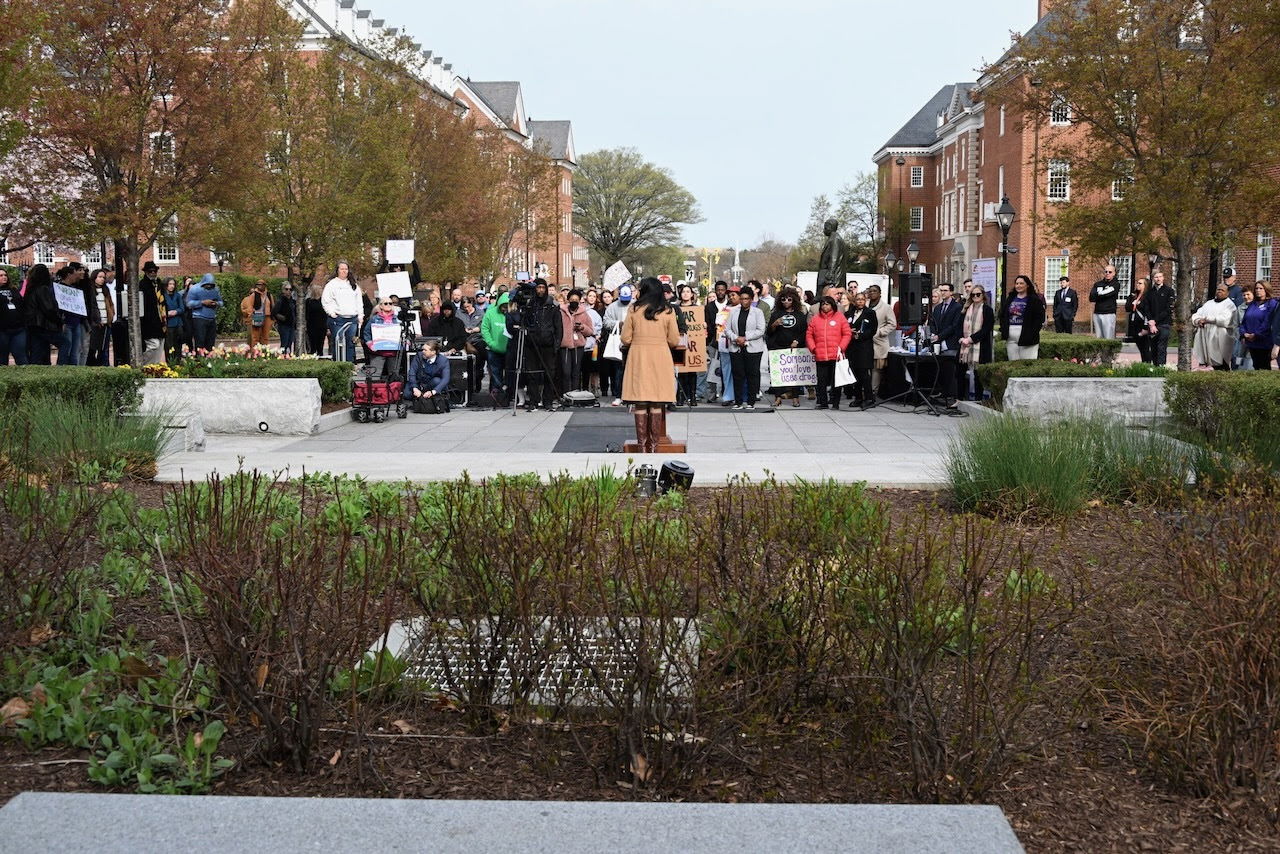America
Lt. Governor Aruna Miller Hosts the First Substance Use Awareness Rally In Annapolis

Annapolis, MD. –
Marylanders gathered at Lawyer’s Mall in Annapolis today for the state’s first Substance Use Awareness Advocacy Day rally, hosted by Lieutenant Governor Aruna K. Miller and Special Secretary of Overdose Response Emily Keller.
Rally attendees represented a broad and diverse coalition—including community leaders from areas most impacted by the crisis, advocates, representatives from community-based organizations, elected officials, state and local agency leaders, and Marylanders with lived experience of substance use and overdose.
Lieutenant Governor Miller reminded Marylanders that while grief is real, it does not get the final word—action, recovery, and community do. She was joined by Special Secretary Keller, Comptroller Brooke Lierman, members of the Maryland General Assembly, and a representative from the office of Baltimore City Councilwoman Phylicia Porter - a member of Baltimore’s first Opioid Restitution Advisory Board and Chair of the Baltimore City Council Health and Environment Committee.
“The fight against overdose isn’t easy. It takes time, persistence, and a belief that change is possible,” said Lieutenant Governor Miller. “Because of the people we heard from today, lives are being saved and communities are healing. Together with our partners in the General Assembly, we’re committed to put words into action.”

Rally attendees were invited to share their ideas on how Maryland can strengthen its efforts to prevent overdose. The feedback collected by the Maryland Office of Overdose Response will be shared with the Maryland Overdose Response Advisory Council, chaired by Lieutenant Governor Miller, to help inform future strategies and actions.
Special Secretary Keller addressed recent decreases in overdoses in Maryland, noting the collaborative efforts of state and local agencies and community organizations that provide care for people who use drugs. She also highlighted the state’s recently released strategic plan for reducing overdoses in Maryland, which emphasizes five priority areas: prevention, harm reduction, treatment, recovery, and public safety.
“We owe it to our communities to keep fighting,” said Special Secretary Keller. “The energy that we saw today from everyday Marylanders demanding continued action to reduce overdose deaths in our state was powerful. The toll that crisis continues to have is immeasurable, and we have to do everything we can to save lives.”
“We reported in our analysis of Maryland’s economy that chronic diseases, including substance use disorder, are barriers to employment. Maryland’s workforce decline mirrors the rise in overdose deaths during the pandemic, and we are still struggling to increase our labor participation rate,” said Comptroller Brooke E. Lierman. “Investing in support for Marylanders struggling with substance use disorder will help restore their sense of well-being, empower them to return to the workforce, and strengthen our state’s economy.”
Recent Overdose Trends in Maryland
The number of fatal overdoses in Maryland has decreased substantially in recent years.
According to Maryland’s Overdose Data Dashboard, there were 1,648 fatal overdoses in Maryland last year, a decrease of 34.4 percent from 2023.
Fatal overdoses in Maryland and across the country reached historic highs following the COVID-19 Pandemic before decreasing in 2024.
In 2021, there were 2,800 fatal overdoses in Maryland, the highest annual total in Maryland’s history.
Moore-Miller Administration Response:
Maryland recently released an updated strategic plan for reducing overdoses in Maryland.
The plan identifies five goals under the priority areas of Prevention, Harm Reduction, Treatment, Recovery, and Public Safety.
Maryland recently announced $12.4 million in competitive grant awards from the Opioid Restitution Fund, which utilizes proceeds from prescription opioid-related legal settlements.
Maryland expects to receive a combined total of over $650 million in settlement funds over the next 15–18 years.
Over $118 million in settlement funds have already been distributed at the local level.
Lt. Governor Miller and Special Secretary Keller have been working alongside local partners in Baltimore City – Maryland’s hardest-hit area – including Mayor Brandon Scott’s Administration and community advocates. Most recently, they collaborated on community walks in Cherry Hill - the first of several planned tours of areas that have been heavily impacted by overdose.



































